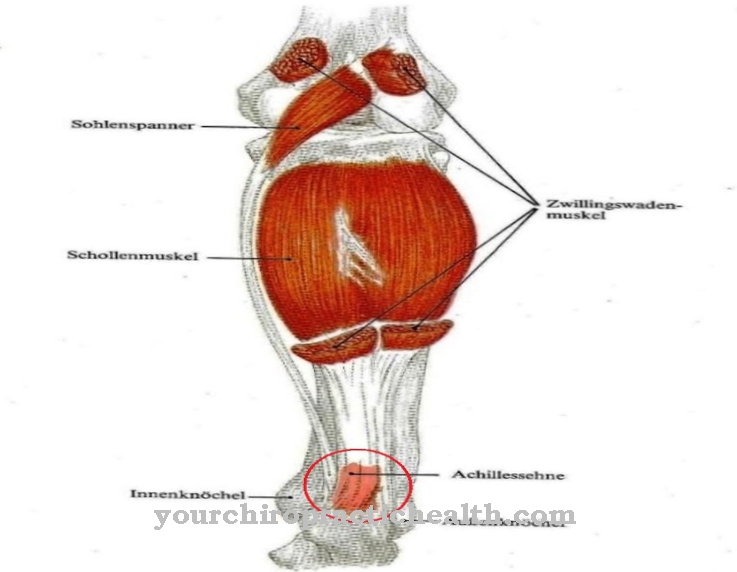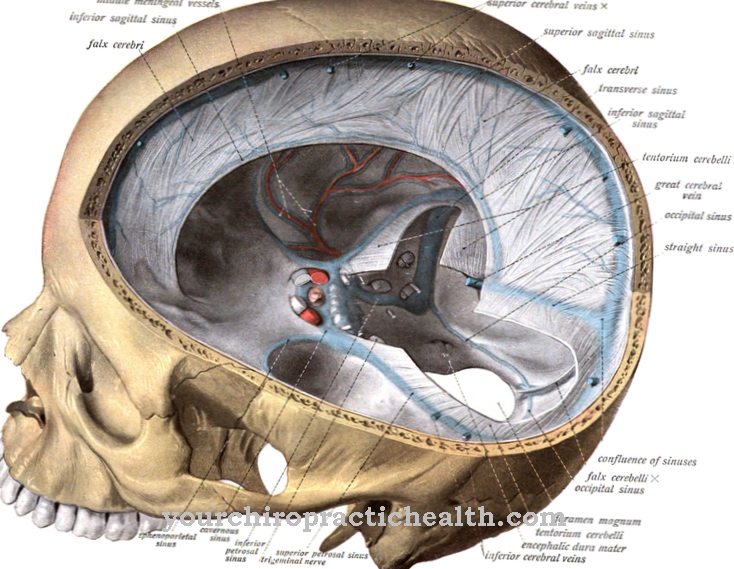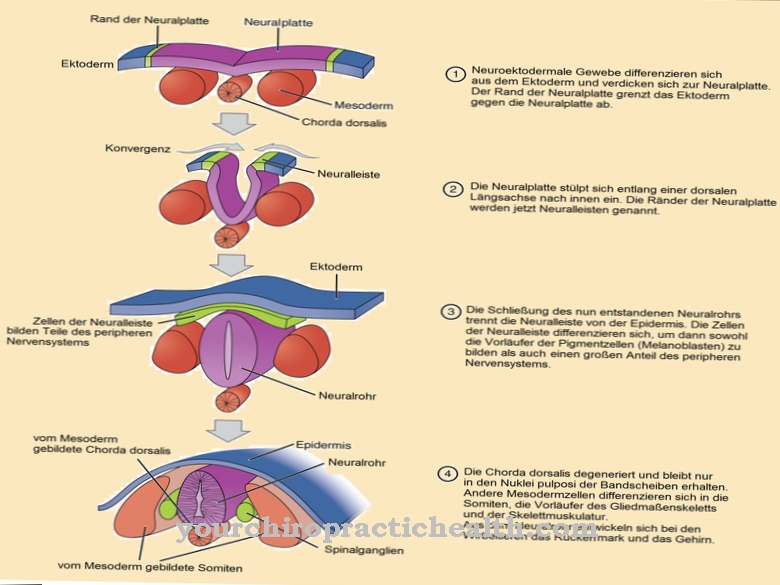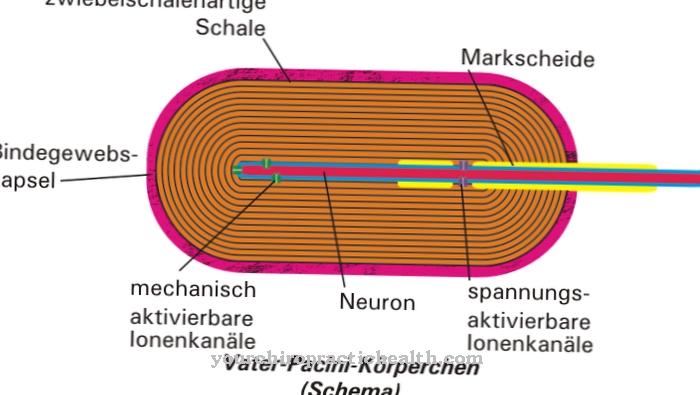Of the Caudate nucleus is made up of a collection of nerve nuclei. It is formed in pairs and is located on the lower side of each cerebral hemisphere, on the side of the thalamus.
The caudate nucleus is assigned to the basal ganglia and is therefore part of important control loops within the extrapyramidal motor system. It is also strongly networked with the prefrontal cortex, the seat of the multisensory movement and episode memory and the control and monitoring of emotional processes.
What is the caudate nucleus?
The caudate nucleus, also known simply as the caudate, is paired for each hemisphere of the brain and is formed by a collection of nerve nuclei and is part of the so-called basal ganglia. Basal ganglia take on important control loop functions in the extrapyramidal motor system. The caudate is surrounded by nerve fibers that can be seen as strips of white matter.
Together with the putamen and the nucleus accumbens, the cluster of nerves forms the striatum, the striped body. It is a kind of functional unit that receives information from the cortex that is processed, filtered and processed by the basal ganglia. The filtered and processed signals are fed back to the cortex via the thalamus. The caudate has a special role within the basal ganglia because it is strongly connected to the prefrontal cortex via nerve cords.
As part of the frontal lobe of the cerebrum, the prefrontal cortex is the seat of the multisensory movement and episode memory, so that the caudatus is included in the control cycle of emotional actions and action planning as well as in cognitive processes.
Anatomy & structure
The name nucleus caudatus (curly nucleus) goes back to its shape, which is reminiscent of a C or a kidney, with a broad "head", a body and the end of the lower end in an elongated, tail-shaped structure can be recognized. The two caudate nuclei lie against the lateral ventricles of the right and left cerebral hemispheres and are separated from the laterally adjacent putamen by strips of white matter made up of nerve fibers.
The caudate, the white matter (nerve fibers) and the putamen together form the striatum (striped body), which as a functional unit forms the entrance gate for the control circuits of the basal ganglia and receives input signals from certain areas of the cortex via glutamatergic nerve fibers. The subject of research is the interconnections of the caudate with the limbic system, in which emotions and instinctual behavior are processed. The limbic system also plays a major role in the body's own "doping system" through the release of opioid endorphins to overcome pain and exhaustion.
Function & tasks
In its capacity as part of the extrapyramidal motor system, the caudate nucleus takes on central tasks in the "assembly" and control of arbitrary complex movements. The procedural-motor memory plays a major role in this. The learning and training of complex natural movements such as B. Walking, jumping, running is closely linked to the reward system controlled by dopamine as a neurotransmitter.
The same applies to learning and training complex movement sequences that were not originally intended for humans, such as B. two-wheeled or even unicycling, control a car or an airplane. The reward system kicks in when a certain movement or sequence of movements brings us closer to the goal of achieving a certain skill. This process of learning with feedback on results is not limited to motor performance, but can generally be transferred to complex learning processes. Within these processes, the caudatus takes on important tasks via its nervous connections with the prefrontal cortex. In the emotional area, he takes on control and planning functions.
Action reviews for appropriateness make him a kind of supervisor. In Anglo-Saxon usage, the caudate nucleus is therefore assigned to the Supervisory Attentional System (SAS). In addition to the planning and action control, the caudatus also controls the activity of the cortex by defining certain threshold potentials, which means that it decides on the importance of sensory messages or other mental findings and whether the cortex should react to them. Findings about the functions and tasks of the caudate nucleus have changed and expanded enormously in recent years. It was found that the caudatus also plays a role in the control of emotional processes such as love, motherly love and pain memory.
You can find your medication here
➔ Medicines against memory disorders and forgetfulnessDiseases
Some well-known neural diseases such as Parkinson's disease, athetoses and dystonia as well as PANDAS, tic disorders and ADHD are associated with acquired or genetic disorders in the control circuits of the basal ganglia.The diseases and complaints often do not relate to a specific basal ganglion, but to a specific functional unit such as the substantia nigra or the corpus striatum with the caudate nucleus and putamen.
Some of the diseases described are caused by genetic defects, so they are inherited. One of the most important disorders associated with a malfunction of the caudate is the so-called tic disorder, which also includes Tourette's syndrome. Tic disorders manifest themselves in involuntary - not deliberately controllable - movements of certain limbs or complex movement patterns. Tic disorders fall into the category of extrapyramidal hyperkinesias and are likely caused by a genetic defect that leads to dysfunction of the caudate.
Since ADHD is often accompanied by tic symptoms, it seems reasonable to assume that both diseases are caused by similar defects. In recent years the caudatus has also been associated with pathological addictive behavior. The opposite problem exists in people with hyperthymetic syndrome.
The caudatus is in top form, the episodic memory of those affected is so strong that practically everything sticks in their memory that they have experienced with all the associated parameters such as date, weather, moods and the like. The hyperthymestic syndrome is always linked to an enlarged caudate nucleus.












.jpg)



.jpg)










.jpg)
